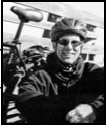“Nebraska’s Cowboy Trail: a User’s Guide” is finished and, man, did I have a blast creating it! During the three years it took to produce, my wife and I logged a couple thousand miles making trips to northern Nebraska towns to interview local historians, search through criminal court records for the names of moonshiners, find the remains of the blacksmith shop of a WWI soldier who died in France six days before the armistice and locate the final resting place of a champion who rose to fame in the early 1900s in spite of having one leg shorter than the other. I also became a fixture at the Nebraska Historical Society in Lincoln where I pored through the museum’s collections of newspapers, letters to public officials, military records, fire maps, plat books, telephone directories and marriage license applications. I did all of this, and more, to write a book about a recreational trail.
I first learned about the Cowboy Rail Line 15 years ago. The train route that stretched 321 miles from Norfolk, in the northeast part of the state, to Chadron in the northwest, was in service for about 122 years and was used to transport people, food, lumber, cattle, ice, coal and grain, among other things. Initially it was a lifeline for isolated residents in a sparsely populated area of the state but its importance and value began to diminish as automobiles became more affordable and as the network of highways became more extensive. No longer were people in Tilden, Ewing, Newport and Long Pine dependent upon the railroad to transport, carry or haul. With their own cars and trucks, they and other northern Nebraskans could move about according to timetables they set.
An article in the Omaha World-Herald in 1993 indicated that the Nebraska Game & Parks Commission was going to convert the former rail line section-by-section so that it would be the nation’s longest recreational corridor. At the time I saw this story I thought that it would be an exciting adventure to bike the entire length once completed. I also hoped that I might be the first to produce a book highlighting interesting features of the route. Due to other obligations at UNK, I felt it necessary to sit on the idea for 11 years.
In 2004, I biked the 150 completed miles of the pathway and documented the subtle changes in landscape along the route from eastern to central Nebraska. I also kept records of wildflowers and trees that border the way, variations in geography and the wildlife that I observed. Back at the C.T. Ryan Library, I searched for information about events involving the trains in or near the towns through which the Cowboy Rail Line passed. Books commemorating a community’s centennial turned out to be extremely valuable resources, because they often included the recollections of the area’s oldest people and their narratives often contained hints about stories I needed to investigate. I was then able to develop topic lists that I used at the NHS so that I could carefully document details of rail-related incidents that occurred in each of the 19 towns on the completed half of the route.
As I spent more time researching the Cowboy Trail, I learned that it is much more than just a recreational corridor. This realization shaped my desire to accurately reconstruct past events to make trail users aware of and appreciate the rich personal histories involving life and death, struggle and triumph that transpired right underneath their feet. The book is set to be released by the University of Nebraska Press in May of 2008. http://nebraskapress.unl.edu/product/Nebraskas-Cowboy- Trail,673380.aspx
